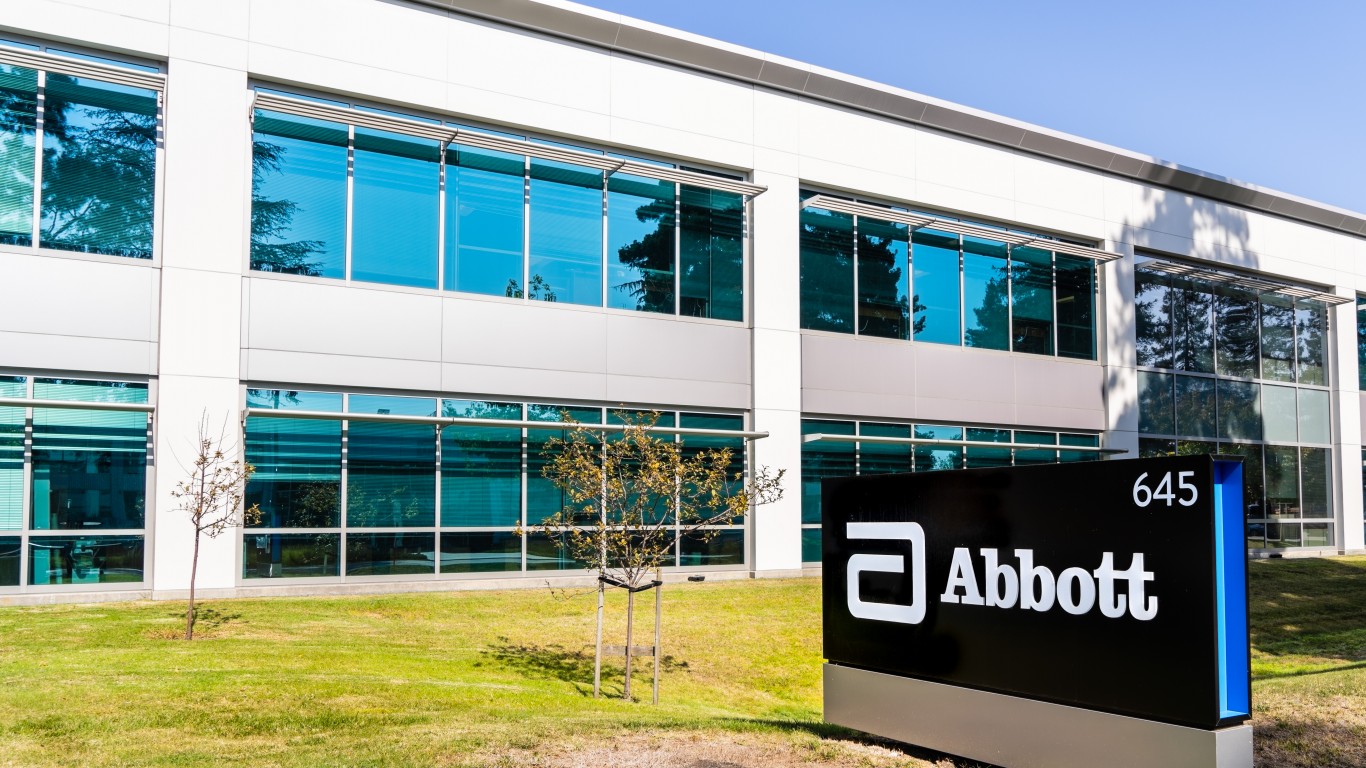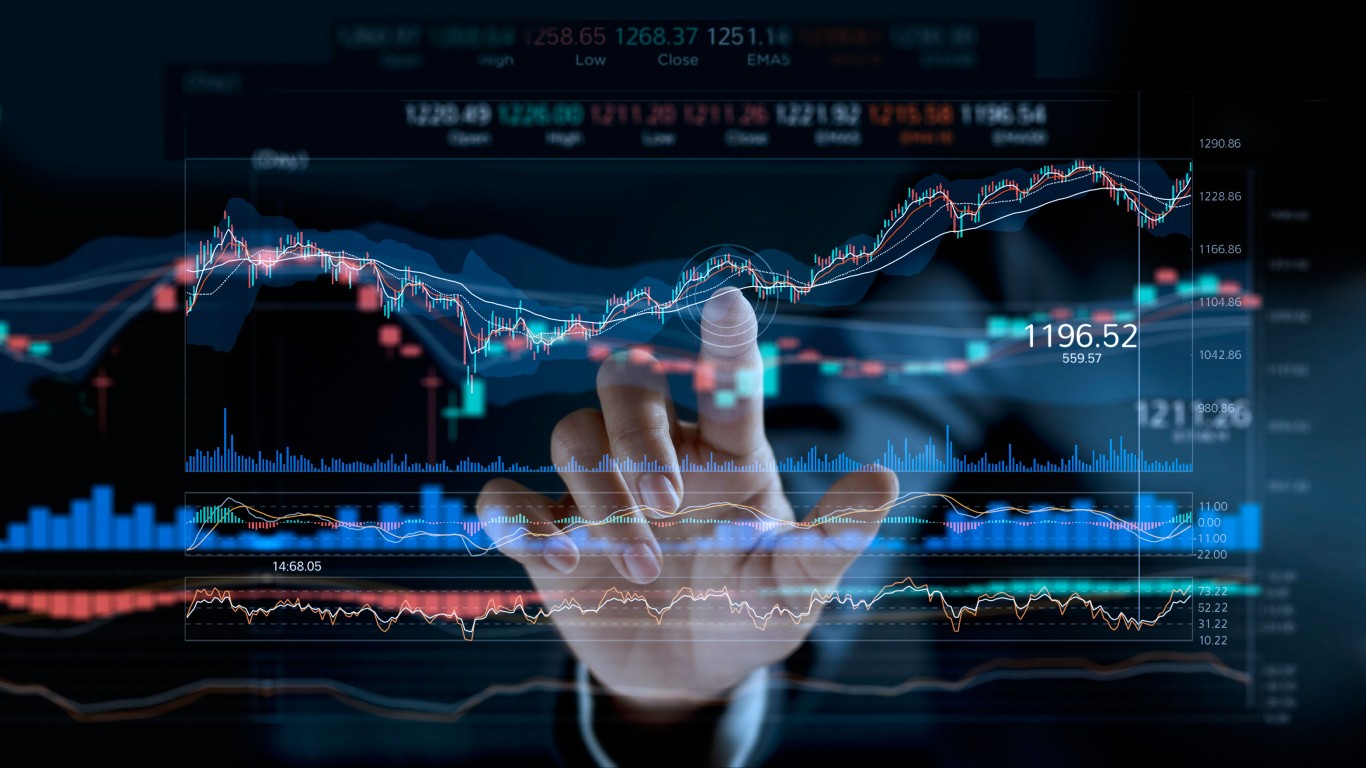
A key component of income investing is a portfolio that includes safe dividends, those that are unlikely to shrink or disappear. Recognizing when a dividend is stable and safe can be a challenge. Yet, certain metrics can offer clear signs for the investor looking to establish or shore up such a portfolio. What do these metrics tell us about the quarterly dividend at Abbott Laboratories (NYSE: ABT)?
The most recent payout from Abbott Labs was $0.55 a share, and the yield is now about 1.9%. The next ex-dividend date is expected in mid-April. The current yield is less than that of such competitors as Johnson & Johnson (NYSE: JNJ) and Medtronic PLC (NYSE: MDT) but greater than that of Agilent Technologies Inc. (NYSE: A), Bruker Corp. (NASDAQ: BRKR) and GE HealthCare Technologies Inc. (NASDAQ: GEHC). It is also a bit higher than the industry average of about 1.7%.
Dividend Aristocrat?

Other Valuation Metrics

The dividend payout ratio indicates how much of a company’s earnings it pays out as a dividend. It is a sign of how safe a company’s dividend is and how much room it has for future growth. The higher the ratio, the greater the risk. Income investors often look for a dividend payout ratio of less than 60%. Abbott Labs misses that mark with a current dividend payout ratio of about 67%. That is higher than the industry average and the company’s mean dividend payout ratio of 60% over the past decade.
A look at free cash flow reveals whether the company has the funds required for its payout, as well as for share repurchases or even paying down debt or making acquisitions. Income investors prefer growing free cash flows. And at Abbott Labs it has grown most years since 2015, when it was almost $1.9 billion, to about $7.8 billion in 2022.
Return on invested capital is a measure of how well a company allocates its capital to profitable projects or investments. Again, the thing to look for is stability, specifically a double-digit ROIC over many years. At Abbott Labs, the current ROIC is less than 10%. It has been in the double digits for only two of the past 10 years. Of the competitors mentioned above, only Medtronic has a lower ROIC.
Operating margin is a measure of the percentage of revenue a company keeps as operating profit. Here too the preference is for a stable double-digit percentage increase. The current figure is more than 15%. Overall, the margin has trended higher since it was about 7% at the end of 2012, but note that it has retreated in the past few quarters. That recent decline was seen at many of the competitors mentioned above as well.
A look at sales growth offers a clue to the volatility or cyclical nature of the business. Steady, moderate growth, say 3% to 7%, is often considered ideal. Revenue at Abbott Labs has increased every year since 2012, from almost $19.1 billion to over $43.6 billion. The growth has not been as steady at any of the competitors mentioned above (GE HealthCare was only spun out of General Electric about a year ago).
A company’s net debt-to-capital ratio also can signal whether a dividend may be at risk. Because too much debt can put dividends at risk in hard times, a lower ratio is considered better. A debt-to-capital ratio above 0.6 usually means that a business has significantly more debt than equity. The ratio at Abbott Labs has been between 0.3 and 0.4 for the past few years.
Probably the most popular valuation metric is the price-to-earnings (PE) ratio. This indicates whether a stock is expensive or cheap at its current market price, compared to the broader market or to competitors. Abbott Labs has a trailing PE ratio of more than 38, the highest it has been in almost two years, though it is in line with the industry average. Note that the forward PE is closer to 25. That compares with a historical benchmark of 15, as well as the broader market’s current 24 or so. All the competitors mentioned above have PEs lower than that at Abbott Labs. (See which five blue chip dividend stocks make up 75% of Warren Buffett’s portfolio.)
And finally, the number of shares outstanding is worth a look. When companies buy back their shares, that number shrinks. But secondary offerings of stock and stock compensation increase that total. Investors tend to prefer a declining total, as that increases their stake over time. For Abbott Labs, the number of shares has been between 1.7 billion and 1.8 billion since 2017, and in the years before that, the number was lower. Note that the company was accused in 2022 of spending money on share buybacks instead of using it to maintain its facilities, which led to baby formula recalls.
Summary

| Dividend Aristocrat | ✔ |
| Dividend payout ratio | 🗙 |
| Free cash flow | ✔ |
| Return on invested capital | 🗙 |
| Operating margin | 🗙 |
| Sales growth | ✔ |
| Net debt-to-capital ratio | ✔ |
| PE ratio | ✔ |
| Shares outstanding | 🗙 |
The Abbott Labs dividend payout ratio is a little high, but for the time being the free cash flow and revenue growth seem to support it. Debt does not appear to be much of a threat to the payout, so long as the company stays out of trouble. Overall, the risks to the dividend seem small for now. If the company returns to buying back shares, that would be a bonus for shareholders.
It’s Your Money, Your Future—Own It (sponsor)
Retirement can be daunting, but it doesn’t need to be.
Imagine having an expert in your corner to help you with your financial goals. Someone to help you determine if you’re ahead, behind, or right on track. With SmartAsset, that’s not just a dream—it’s reality. This free tool connects you with pre-screened financial advisors who work in your best interests. It’s quick, it’s easy, so take the leap today and start planning smarter!
Don’t waste another minute; get started right here and help your retirement dreams become a retirement reality.
Thank you for reading! Have some feedback for us?
Contact the 24/7 Wall St. editorial team.





